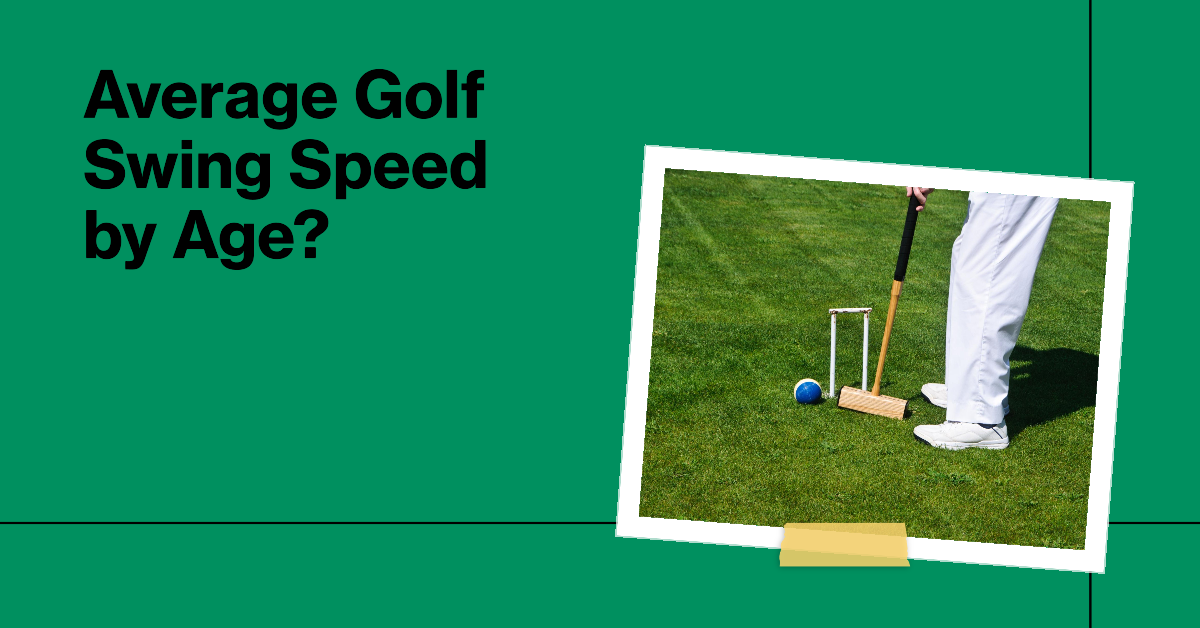Golf, a revered sport that intertwines skill, concentration, and precision, is not solely about technique and mental fortitude; it also hinges on the physical capabilities of the players. Among the myriad elements that influence a golfer’s performance, swing speed stands as a critical metric. The interplay between age and golf swing speed unfurls a fascinating narrative that can intrigue both amateur and seasoned players alike. This exploration elucidates not just the statistics but the underlying implications that resonate through the golfing community.
Understanding golf swing statistics begins with a fundamental comprehension of swing speed. Measured in miles per hour (mph), swing speed reflects how rapidly a golfer can accelerate their clubhead through the impact zone. This speed is instrumental in determining the distance of the ball traveled; thus, it serves as a barometer for evaluating a golfer’s power on the course. However, swing speed is not static; it ebbs and flows with age. As players transition through different life stages, their swing dynamics undergo transformations that can significantly impact their game.
The trajectory of average golf swing speed by age reveals a telling pattern. Typically, young golfers—their muscles still supple and responsive—exhibit the highest swing speeds, often peaking in their late twenties to early thirties. According to empirical data, this cohort tends to achieve swing speeds averaging between 100 and 115 mph. This proficiency is a culmination of youthful energy, physicality, and often, years of practice. As age encroaches, however, a notable decline in swing speed commences.
Beginning in the mid-thirties, the first signs of this diminishing velocity manifest. Many golfers experience a measurable deceleration in swing speed, often attributed to physiological changes such as reduced muscle elasticity, joint stiffness, and overarching fatigue. A golfer in their forties may register an average swing speed between 90 and 105 mph. Herein lies a critical juncture: while some may deem this decline as detrimental, it is vital to acknowledge the adaptive strategies that seasoned players can employ.
The advent of technology and optimized training regimes offers athletes the chance to mitigate the adverse effects of aging. Tools such as launch monitors provide real-time data, allowing golfers to tweak their mechanics and maintain or even enhance their swing speed. Alongside these tools, tailored fitness programs focusing on flexibility, strength, and endurance are pivotal. It is not uncommon to find golfers in their fifties swinging faster than their younger counterparts, thanks to a committed approach to physical health and an understanding of their biomechanics.
Transitioning into the realm of senior golfers, those in their sixties and seventies typically see their swing speeds drop to averages ranging from 70 to 90 mph. While these figures may initially appear discouraging, it is important to recognize that golf remains an incredibly versatile sport. The experience accumulated over decades forms an invaluable asset. Senior players often exhibit refined skills, advanced course management, and a keen tactical mindset, compensating for any deficits in pure speed.
Interestingly, the drop in swing speed over the years invites a discussion around the concept of power versus finesse. The narrative shifts from sheer velocity to the art of precision. Golf becomes less about how hard one can hit the ball and more about how strategically the ball can be played. Using the terrain, understanding the wind, and employing thoughtful club selection serve as critical components for success. This pivot in mindset can invigorate not only the senior players but anyone who finds themselves grappling with the loss of physical faculties.
Another dimension that warrants consideration is the impact of environmental factors on swing speed. Golf courses, often shaped by their surroundings, vary in conditions such as elevation, humidity, and wind resistance. These fluctuations can influence a player’s swing dynamics, making adaptability paramount. For instance, a player might find that maintaining a consistent swing speed becomes more challenging in windy conditions or when navigating hilly terrain. Understanding these external factors is crucial for players of all ages to maximize their performance on the course.
The dialogue surrounding swing speed by age beckons a renewed appreciation for the sport. It illustrates that age, while influencing physical capabilities, does not dictate one’s journey in golf. Rather, it underscores a profound shift in perspective. For many, the allure of golf resides not in the relentless pursuit of distance but in the seasoned wisdom that enhances one’s connection to the game. Embracing this evolution allows players to cultivate a more fulfilling golfing experience, one enriched by the thrill of strategic play and camaraderie.
Moreover, as the golf community grapples with its demographics, initiatives targeting younger players remain imperative. Engaging the youth through clinics, workshops, and mentorship can foster a lifelong passion for the sport. By instilling an appreciation for the subtleties of golf early on, future generations will learn to value patience and resilience—the very qualities embodied by seasoned golfers.
Ultimately, the statistics surrounding average golf swing speed by age invite a comprehensive reevaluation of the sport. They serve as a reminder of the myriad challenges and rewards encountered throughout the golfing journey. As players progress through various life stages, adapting to their evolving swing speed becomes essential. Thus, while age may dictate the physical attributes of a golf swing, it certainly should not obscure the joy of playing; conversely, it may enhance the individual’s relationship with the game and the course. In that balance lies the true essence of golf.
